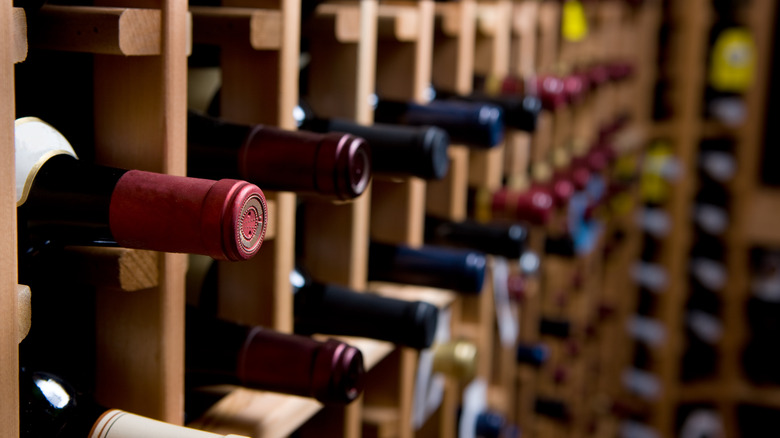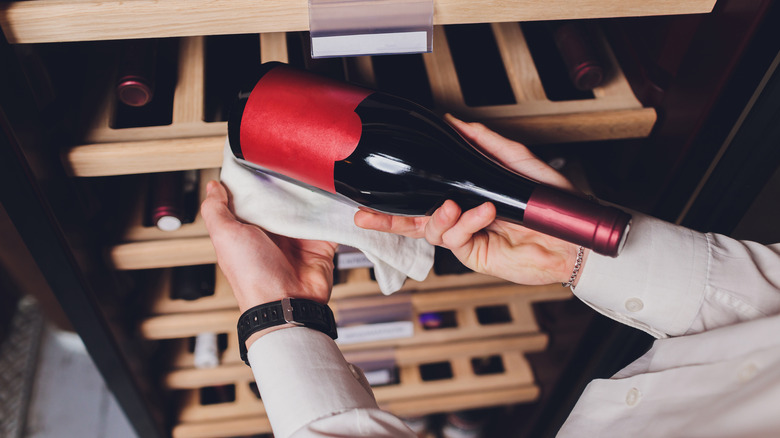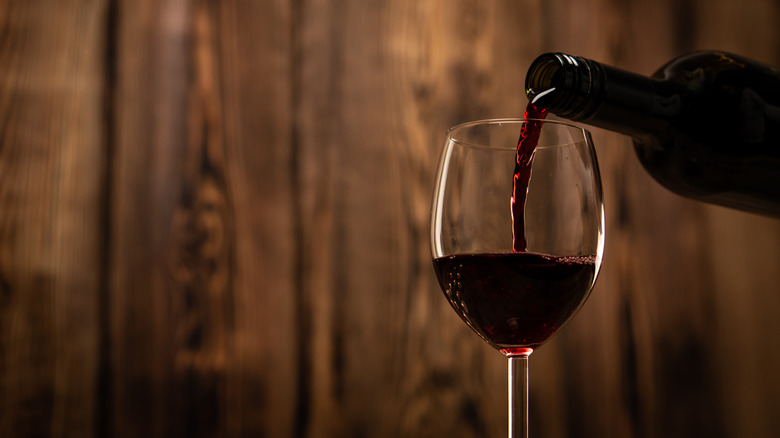How To Store Wine So It Will Last Close To Forever
With the exception of some higher-end wines, most wines are released when they are ready to drink. And, unless you're a collector, you probably consume your wines fairly quickly. But perhaps you've found an exceptional wine or have purchased several bottles of something that has particular meaning to you (like the wine from your wedding, or the champagne you drank when your first child was born). In these cases, you might want to keep the bottles for longer periods of time. How do you ensure it's going to taste good when you uncork a bottle a decade from the time you purchased it? What you have to do is control the factors that can ruin a wine. Those factors are temperature, humidity, light exposure, storage position, movement, and surrounding odors.
If you are fortunate enough to have a wine cellar in your home, you're ten steps ahead of everyone else because such cellars have optimal designs for wine storage. For the rest of us, all we can do is try to emulate those same conditions. For starters, select a dark, cool room, like a basement or a cool garage. If you can put the bottles inside a cupboard or pantry that's inside of said room, that's even better. Remember, you want to keep light away from it as much as you can. If that's not possible, cover the bottles with a blanket. Always lay them down on their sides, and try not to move them around too much.
Keep wine happy if you want it to last
When it comes to temperature, extreme changes will completely throw a wine off balance. Warm temperatures can make the wine turn sour while frigid temps will expand the liquid, potentially making the bottle explode. The best storage temperature for all kinds of wines is a comfortable 55 degrees Fahrenheit.
Humidity is also a delicate matter. If the surrounding air is too dry and the cork dries out, too much oxygen can seep into the bottle, ruining the wine. However, too much humidity could lead to mold growth. A humidity level of 60-70% is considered ideal for long-term wine storage. This may mean keeping a humidifier (or dehumidifier) handy in your storage area.
Ever wonder why some wines, particularly reds, are stored in dark green bottles? It's to protect the wine from light exposure, which can break down the tannins and lead to a wine's demise. If you don't plan on opening bottles for a while, keep them away from the light as much as possible — in a dark cupboard, in a cellar, or, as previously noted, with a simple blanket.
Position and atmosphere are everything
There's a reason why wine cellars and caves feature rows and rows of wines lying on their sides and that is to keep the corks moist. As explained above, if the cork dries out, too much oxygen becomes a risk. However, bottles that are secured with screw tops instead of corks actually will store better because intruding air isn't a factor. On that note, while the bottle is on its side, don't disturb it. The less the bottle is moved, the better, particularly if the wine has sediment in it. If the bottle is moved too much, the sediment won't ever settle, leading to gritty wine.
Once you've found the perfect location to store your wines long term and have ensured it's not too hot, humid, bright, or sitting along the wall of the vibrating washing machine, there is one more thing to think about: How does it smell in there? Non-screw top wine bottles aren't airtight, so some air and oxygen permeate the cork at all times. If there are unpleasant odors in the vicinity (like man cave smoke or oily garages that house the household garbage), those could potentially seep into the wine as well. An air purifier could help in this situation.
After all of your efforts is when the real hard work comes in: actually seeing if you can, indeed, store those wines long-term, or if you'll be uncorking them after a week.



